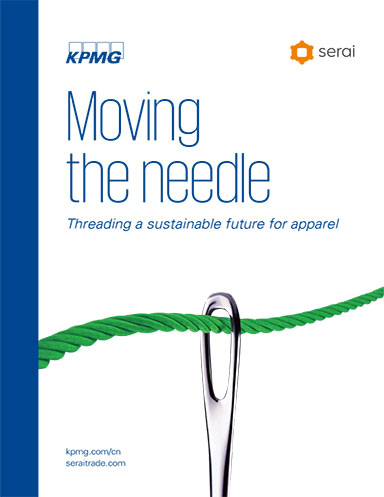Four Changes Apparel Manufacturers Must Make with the Current Coronavirus Pandemic

Apparel manufacturers must set their goals higher than just surviving the current coronavirus crisis; they must fully embrace and exploit the opportunities that the situation presents and use this crisis to establish the foundations for growth in years to come.
The winners that emerge from times of turmoil tend to be companies that clear hurdles by a significant margin; countries and companies that make changes beyond the requirements of the day. The rise and fall of apparel manufacturing in the United States perfectly captures both sides of this story.
The US apparel industry grew exponentially after the Industrial Revolution, with a net growth of 7.5 million workers from 1880-1920. British ideas brought technology to the United States, but the real impetus for growth came from new, homegrown innovations. Eli Whitney, for example, sped up the separation of seeds from cotton, which enabled production of the latter to increase fifty-fold.
Fast forward to 2019, the US apparel industry employs roughly 585,000 workers, less than 10% of the previous century. The common explanation is the move to low wage countries. But this doesn’t take into account the advantages of speed, flexibility, and proximity to the centres of fashion and design that have helped high-wage countries like Italy, defend niche markets for haute couture.
Here are four major changes manufacturers must make to ensure they don’t just survive, but come out of COVID-19 stronger.
1. Select Partners Wisely
The majority of manufacturers trade on open account terms with no protection against buyer default scenarios. This must change. Buyer assessment and risk mitigation must become core competencies for manufacturers looking to grow.
There’s been an erosion of trust from cancelled orders and broken contracts, caused by the pandemic. According to a report by the Center for Global Workers’ Rights and the Workers Rights Consortium, more than half of Bangladesh apparel suppliers had their orders canceled with 91.3% of buyers refusing to pay for production costs, resulting in the closure of many factories. There’s a need to be selective when it comes to buyers – not all demand is desirable.
It’s crucial for manufacturers to understand any risks associated with counterparties, whether they be established incumbents or emerging digital brands, to avoid a repeat of the pain and financial loss many have suffered in 2020.
What can manufacturers do to ensure buyers are reliable and foster more trust in the relationships? They should leverage risk mitigation tools to help suppliers check the backgrounds and financial health of buyers. Purchasing of trade insurance or payment guarantees could also avoid similar financial losses in the future.
2. Re-evaluate Your Value Proposition
The most innovative players add value to their offerings. Becoming more flexible on order size, providing trend analysis and developing design-led solutions are all ways to do so. These extensions outside the current proposition could also grow into new revenue streams.
For example, suppliers can look to using 3D or digital samples which can save them significant time and money. With the shift towards smaller volume orders, manufacturers should also look at adapting their infrastructure and processes to cater to this. Agility and a change in mindset is key.
Manufacturers can find new differentiators by understanding what is important to each brand, and adjusting their strategy accordingly. This could be placing more emphasis on sharing real time data, or using more sustainable fabrics.
3. Embrace Transparency
In today’s climate where consumers are more socially and environmentally conscious, any involvement in unethical supply chain processes can lead to boycotts. Suppliers have to embrace transparency which will ultimately lead to more trust.
Investors are also analyzing ESG credentials as determinants of future financial performance, while regulators are introducing import restrictions to address concerns about forced labor.
New technologies, such as blockchain, allow suppliers to connect with their customers’ data and link to these buyers’ systems so that their supply chain is visible from end-to-end. Being the early adopters of these ethical and sustainable solutions allow manufacturers to differentiate themselves from other suppliers.
4. Make the Digital Switch Permanent
COVID-19 has accelerated the digitization of the global economy. APIs make tech integration simple, while Software as a Service (SaaS) platforms make tech adoption economical.
Manufacturers must look beyond their core activities to use this period of uncertainty to embrace the full suite of digital solutions at their disposal. Some of the solutions available in the market today include technology for 3D modelling and digital sampling, virtual showrooms, product lifecycle management and quality assurance and auditing. AI and data analytics can also benefit manufacturers in many ways - helping to increase productivity in the factories for instance.
Don’t Wait to be Led
In an industry where the standards and practices have typically been set by the brands and retailers, it may seem prudent to wait and see how things evolve. Manufacturers should not fall into that trap – doing so will put them in a reactionary position. Rather, manufacturers must take the lead and set the agenda.
There’s opportunity in every crisis. But it means embarking on a new approach to apparel manufacturing – digitisation, transparency, building new partnerships and creating better value.
Related Resources
How A Large Apparel Manufacturer Achieved Supply Chain Transparency
A large textile and apparel manufacturer that prides themselves on being sustainable in their supply chain have struggled with showing this transparently to their customers. Download Now!
Threading a Sustainable Future for Apparel
Supply chain transparency has the potential to bring multiple benefits to companies across the apparel industry. Download Now!
Article Topics
Serai News & Resources
Fashion Powerhouse Implements Supply Chain Transparency for its Sustainability Efforts Supply Chain Transparency Helps Lever Style build Trust With Their Partners What are the Various Aspects of Supply Chain Sustainability? Why Apparel Companies Need a Strong Digital Presence New Approach to Supply Chain Transparency Four Changes Apparel Manufacturers Must Make with the Current Coronavirus Pandemic Threading a Sustainable Future for Apparel More SeraiLatest in Supply Chain
Ranking the World’s 10 Biggest Supply Chains The Top 10 Risks Facing Supply Chain Professionals Walmart’s Latest Service: Ultra Late-Night Delivery DHL Supply Chain Appoints New CEO Amidst Leadership Changes Dollar Tree’s Oklahoma Distribution Center Decimated by Tornado City of Baltimore Files Lawsuit to Recoup Money for Collapsed Bridge The Era of Self-Driving Tractor-Trailers Set to Begin More Supply Chain














